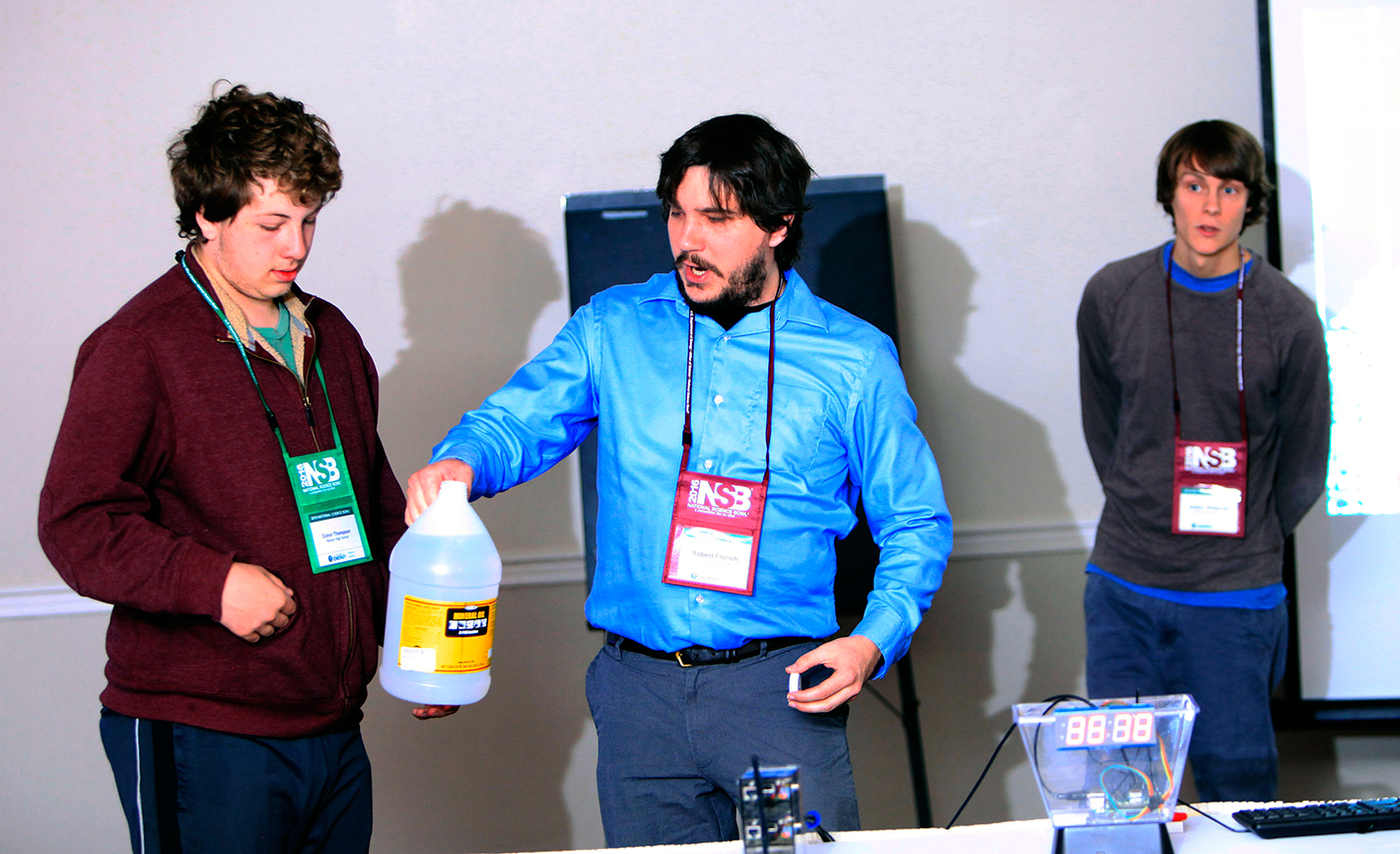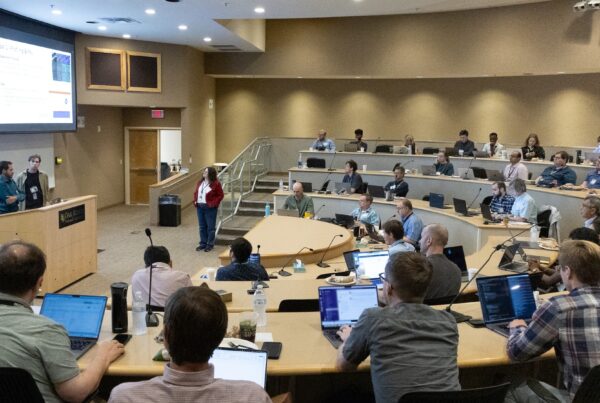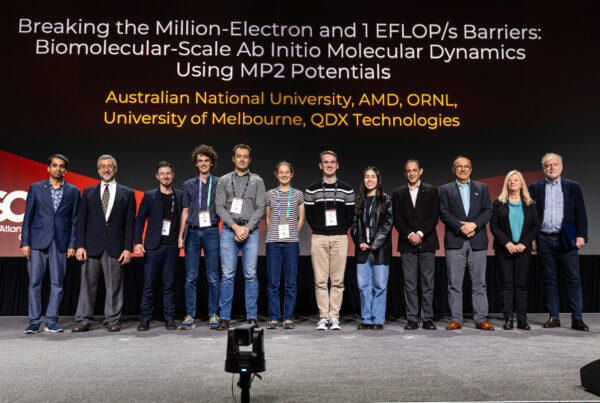OLCF team demonstrates Tiny Titan to students at National Science Bowl
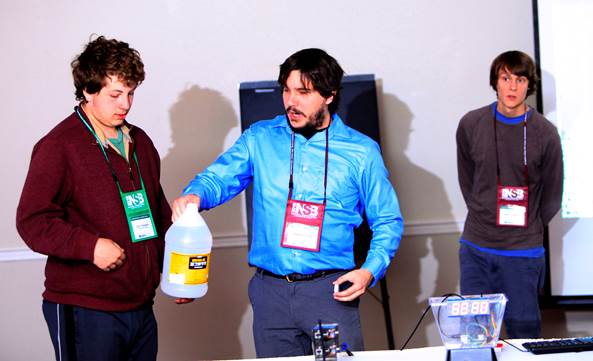
A student volunteer (left) poured mineral oil on a processor alongside OLCF’s Robert French (center) and Adam Simpson (right).
To say Tiny Titan is well traveled may be an understatement. In 2016 alone, the miniature version of one of the world’s fastest supercomputers—Titan—has been part of six different events in five cities throughout the country. One recent event was the National Science Bowl competition in Washington, DC. Accompanying Tiny Titan were user assistance specialists Adam Simpson, Robert French, and Matt Belhorn, all of the Oak Ridge Leadership Computing Facility (OLCF), a US Department of Energy (DOE) Office of Science User Facility located at DOE’s Oak Ridge National Laboratory.
The National Science Bowl, sponsored by the DOE Office of Science, is a competition among teams of high school and middle school students. In this fast-paced event, teams work together to solve technical problems and answer questions in all areas of science and math. When the students aren’t competing, they attend presentations and participate in demonstrations, such as the one with Tiny Titan.
“These kids were impressive,” Belhorn said. “They had interesting questions, and there was a wide range of students with different levels of supercomputing knowledge. We had groups that were new to the concept of supercomputers and intrigued by it and others who probably have their own clusters at home.”
The OLCF team participated in four 35-minute sessions. One session explained the basics of Tiny Titan and demonstrated the effects of heat on a computer. During the session, a student volunteer would overclock (reset computer components to increase speed) a Raspberry Pi, the processor used in Tiny Titan, and another volunteer would pour mineral oil on it to show the principle of immersion cooling versus air cooling. It also showed why, because of heat management, many different processors—rather than one extremely fast processor—comprise a supercomputer. In another session, the team demonstrated how a single Raspberry Pi 2, a four-core processor, is faster than the cluster of single-core processors used in Tiny Titan.
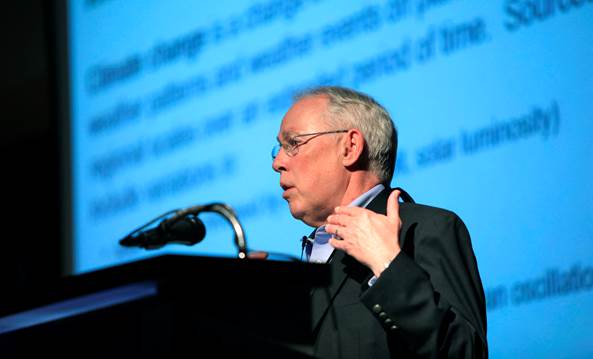
NCCS Director, Jim Hack addressed how scientists use supercomputers such as Titan to develop accurate predictive capabilities for climate variability.
“The main goal of Tiny Titan is to show how parallel computing works and why places like the OLCF need 20,000 computers,” Simpson explained. “The students came away from our demonstrations knowing the basic principles of supercomputers.”
Also at the Science Bowl, OLCF director Jim Hack gave a presentation on climate change. Hack addressed how scientists use supercomputers such as the OLCF’s Titan to develop accurate predictive capabilities for climate variability and changes introduced by anthropogenic forcing—pollution from human activity—of Earth’s climate system. This remains a grand challenge from both scientific and computational perspectives.
After Tiny Titan’s Science Bowl appearance, the OLCF team participated in a DC elementary school’s science fair, where they interacted with many students who appeared fascinated by supercomputing. Simpson was particularly impressed with one young girl who struck up a conversation on supercomputers with the team and even sent Simpson away with a homemade business card. “I fully expect to see her winning the Science Bowl in a few years,” he quipped, “and possibly working at the OLCF soon after.”
Oak Ridge National Laboratory is supported by the US Department of Energy’s Office of Science. The single largest supporter of basic research in the physical sciences in the United States, the Office of Science is working to address some of the most pressing challenges of our time. For more information, please visit science.energy.gov.


